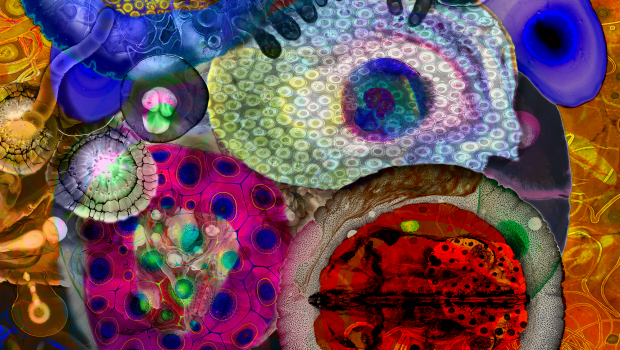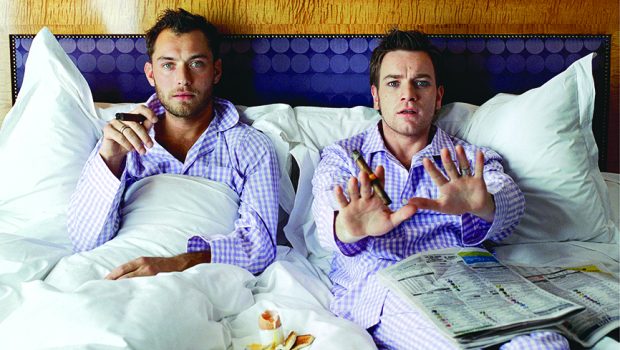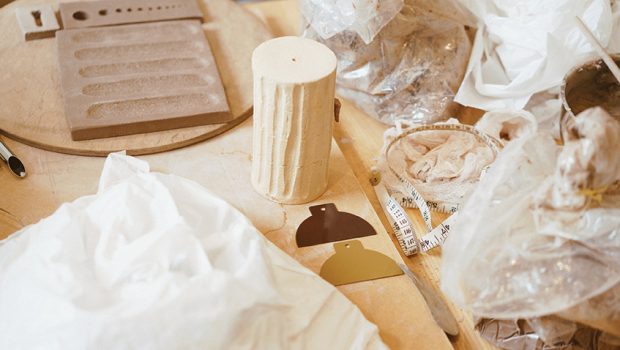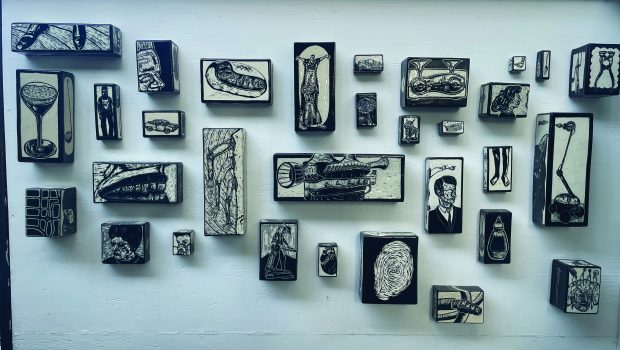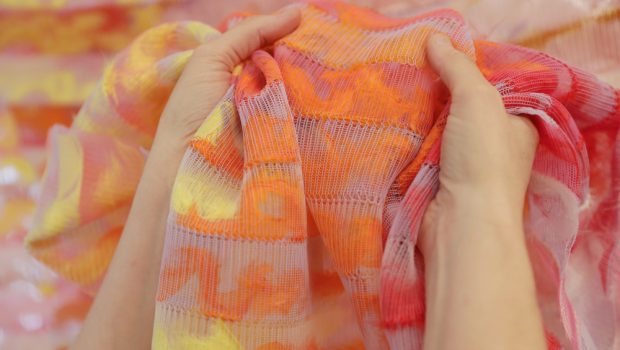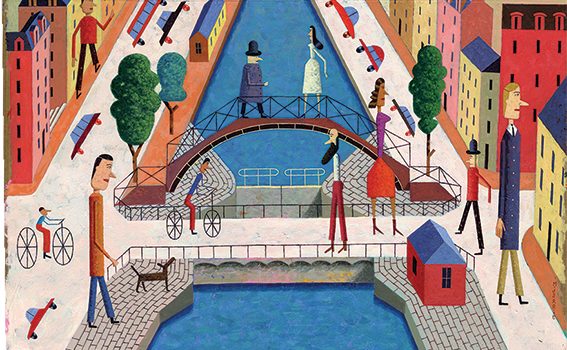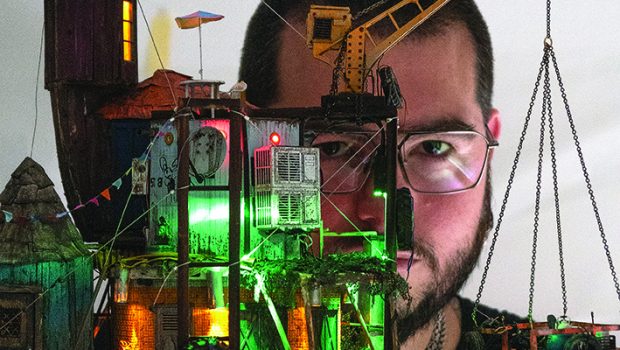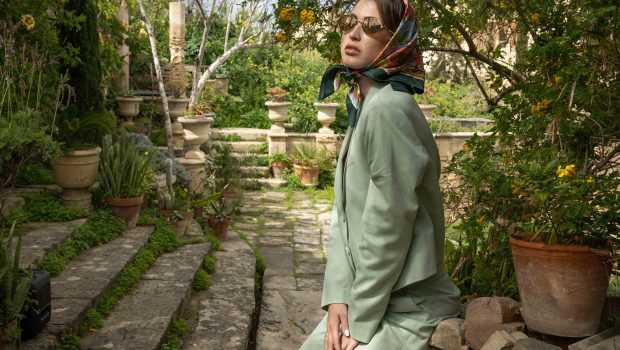Chasing horizons
Photographer Kurt Arrigo on his life passion that has taken him around the globe
WORDS: MIKE ROSS
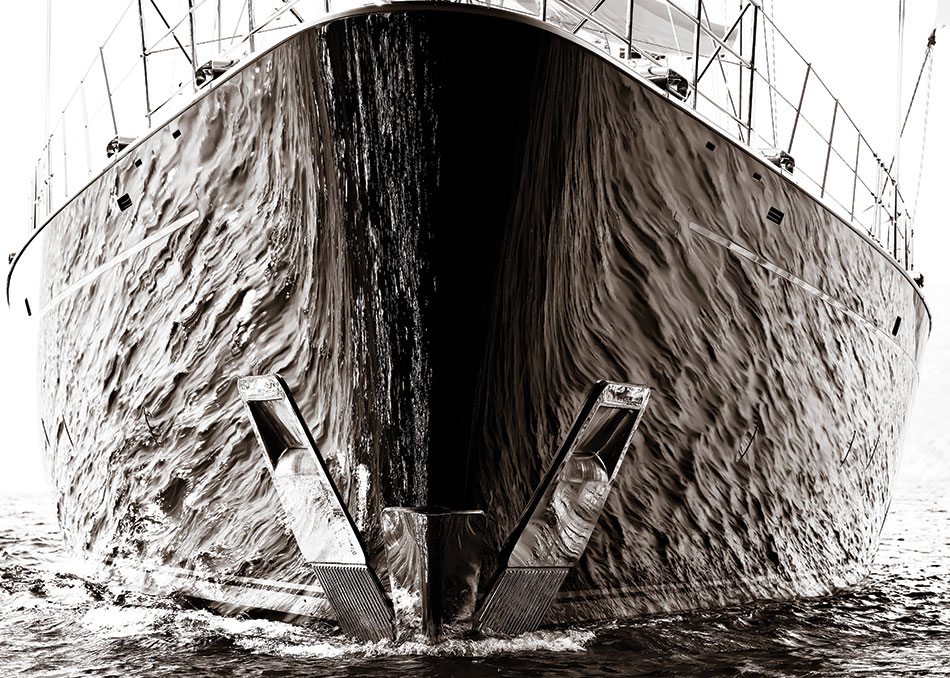
Gozo based photographer Mike Ross meets up with Maltese photographer Kurt Arrigo to talk about their passion in life one which has taken Kurt around the globe gathering a world of experience and snaps of the earth under and over the water.
World-renowned marine photographer Kurt Arrigo has been inextricably linked to the sea from a very young age. His father ran one of the first diving schools in Malta, and Kurt was introduced to diving at the age of nine or ten, followed by sailing a few years later.
“I grew up on the water. Ever since I was a young kid, the sea was my closest friend.” An enduring passion for the sea was born.
His interest in photography was sparked at the same time as he was acquainting himself with these and any other water-based activities with which he could get involved. His grandfather bought him a little disc camera and he soon graduated to his first SLR, a much-loved Pentax Super-A, which accompanied him everywhere as his interest in sailing and racing grew. “It was an extension of my hand in a way”.
As he gained confidence and expertise as a teenager, more sophisticated cameras followed: a Pentax 6×7, a Mamiya 6/7 and a Leica M7. These were, of course, pre-digital days, when Kurt learnt to process his film himself and print the results. He put in endless hours, learning his craft: reading, embracing the technology and learning from the work of other photographers before adapting his new-found knowledge to his own lifestyle. “I think anybody who started in photography with film has an advantage, because of an understanding of the process and shooting for the image, rather than shooting images but thinking about the post.”
But it wasn’t all plain sailing. Making a living from water-based photography in Malta was surprisingly difficult and so Kurt also took on assignments in the tourism sector, hospitality and advertising but always keeping the sea close to his heart. He successfully published annual calendars, built an impressive portfolio, won some important competitions and gained more and more recognition overseas. The America’s Cup in 1992 was a landmark assignment from which there was no looking back.
One only has to study examples of his extraordinary body of work to realise that there are some serious physical challenges involved. According to photographers who come from other disciplines, yacht-racing is probably one of the biggest challenges because so many elements come into play. It’s impracticable to use a photographic assistant in the conventional sense but Kurt relies on the support of a dedicated team to help him with everything surrounding the shoot – from logistics, planning and booking, to the professionals at the sharp end: the boat drivers and helicopter pilots. With so many variables involved, no amount of planning can allow for unforeseen situations.
He is not necessarily able to position himself and his camera where he might choose to be, but his personal yacht-racing experience has taught him to anticipate and be ready to adapt to a sudden change in the scenario. Physical fitness is essential and Kurt cycles or swims every day to keep in shape for the demands of the job. “I’m one of the very few marine photographers that carries a hand-held six-and-a-half-kilo lens, so very often I’m holding one of these massive lenses – a 400mm 2.8, which is a heavy piece of kit and you can’t use any monopods or any of that sort of thing because you’re moving with the sea, you’re moving in the helicopter, but it offers beautiful optics. You have to be your own steadicam”.
…”He is a master at capturing the grandeur
of the sea”…

There is an element of danger involved and, along with the racing crew, he always has to sign a disclaimer but there’s also a risk assessment from the companies with which he’s working so he’s confident that he’s working with reliable people. “There was one time in Tasmania when we were between two islands and the waves were about seven or eight metres and I thought: ‘Holy shit, what am I going to do here?, or alarms will off in the helicopter, and so on, but nothing’s more dangerous than cycling on our roads”.
When not actually shooting from the water’s surface, Kurt is as likely to be flying in a helicopter as he is to be shooting from beneath the waves and whether he’s under it or above it, he is a master at capturing the grandeur of the sea. “I love the aerial perspective but when I’m actually on the water I feel much more connected with what I’m shooting, with the sea spray and the movement of the water.” Underwater photography, at which Kurt has become highly accomplished, has a separate set of challenges, not least of which is communication between photographer and subject, as with the extraordinary series of photographs he has shot with Saho Harada, the acclaimed former synchronised Olympic double medallist swimmer. With a shoal of tuna circling above her, she performs a graceful underwater ballet. “We have to keep coming to the surface, of course, but there’s an unspoken communication between us and it’s very natural because she is such a disciplined athlete. She knows what I’m after, performs accordingly and I capture the moment.”
Another specialised area for which Kurt is often in demand is as a film stills photographer. He recently worked on The Dovekeepers, a four-part historical TV mini-series shot in Malta. “I’m always drawn to a bit of action and I love catching strong moments.” While unimpressed by the hierarchy and the big names with egos to match that abound in the movie world, he has a lot of time for sincere people who are as passionate about their projects as he is about his own work. “It’s humbling when one of the most influential producers in America, such as Mark Burnett on The Dovekeepers, shows a genuine interest in what I’m doing, encourages me and gives feedback. It’s so rewarding to know that someone at his very high level values my expertise.”
Kurt’s work takes him overseas but he never wants to be away from his Malta home for long. “This year I was involved the chance to be an on-board photographer and media man in the Volvo Ocean Race, which is a nine-month race around the world, but I have to think not just selfishly of me, but of the full picture: of being away from my family and certain clients”. Of the many far-flung locations in which Kurt has photographed during his career, top of the list for return visits are New Zealand’s South Island and the Galapagos Islands.
Kurt eschews the predictable photo library route in favour of selling his pictures through close and creative relationships with a wide variety of clients. His work recently enhanced a sumptuous coffee-table book on horses, after having been approached by a New York curator. Not surprisingly, Kurt’s stunning view is from below, of a horse swimming in the sea above him.
He feels that his images are better appreciated, for example, in the setting of a contemporary Miami hotel through client communication, than waiting for recognition on the pages of a stock image library. His work has been impressively showcased in three books of his own, Grand Harbour Malta, Maritime Malta and his first one, Malta: A Coastal Journey. It is surely just a matter of time before his work graces the hallowed pages of National Geographic.
Reviewing his career so far, Kurt says: “I feel very fortunate to have been able to pursue a dream that came very naturally to me, and that has supported me and my family.” More important than remuneration, however, is to be able to choose the projects that excite him, collaborating with real people who appreciate his talent and being close to the elements that he loves. As for the future, Kurt is eyeing some conservation projects in Egypt, on the shores of the Red Sea, with its spectacular diving. But when asked what would be his dream photographic assignment, he unhesitatingly replies: “Antarctica – I’d love to get on an expedition: something in the cold”.
“I grew up On the water. Ever since i was a young kid, the sea was my closest friend.”

orld-renowned marine photographer Kurt Arrigo has been inextricably linked to the sea from a very young age. His father ran one of the first diving schools in Malta, and Kurt was introduced to diving at the age of nine or ten, followed by sailing a few years later.
“I grew up on the water. Ever since I was a young kid, the sea was my closest friend.” An enduring passion for the sea was born.
His interest in photography was sparked at the same time as he was acquainting himself with these and any other water-based activities with which he could get involved. His grandfather bought him a little disc camera and he soon graduated to his first SLR, a much-loved Pentax Super-A, which accompanied him everywhere as his interest in sailing and racing grew. “It was an extension of my hand in a way”. As he gained confidence and expertise as a teenager, more sophisticated cameras followed: a Pentax 6×7, a Mamiya 6/7 and a Leica M7. These were, of course, pre-digital days, when Kurt learnt to process his film himself and print the results. He put in endless hours, learning his craft: reading, embracing the technology and learning from the work of other photographers before adapting his new-found knowledge to his own lifestyle. “I think anybody who started in photography with film has an advantage, because of an understanding of the process and shooting for the image, rather than shooting images but thinking about the post.”
But it wasn’t all plain sailing. Making a living from water-based photography in Malta was surprisingly difficult and so Kurt also took on assignments in the tourism sector, hospitality and advertising but always keeping the sea close to his heart. He successfully published annual calendars, built an impressive portfolio, won some important competitions and gained more and more recognition overseas. The America’s Cup in 1992 was a landmark assignment from which there was no looking back.
One only has to study examples of his extraordinary body of work to realise that there are some serious physical challenges involved. According to photographers who come from other disciplines, yacht-racing is probably one of the biggest challenges because so many elements come into play. It’s impracticable to use a photographic assistant in the conventional sense but Kurt relies on the support of a dedicated team to help him with everything surrounding the shoot – from logistics, planning and booking, to the professionals at the sharp end: the boat drivers and helicopter pilots. With so many variables involved, no amount of planning can allow for unforeseen situations.
He is not necessarily able to position himself and his camera where he might choose to be, but his personal yacht-racing experience has taught him to anticipate and be ready to adapt to a sudden change in the scenario.
Physical fitness is essential and Kurt cycles or swims every day to keep in shape for the demands of the job. “I’m one of the very few marine photographers that carries a hand-held six-and-a-half-kilo lens, so very often I’m holding one of these massive lenses – a 400mm 2.8, which is a heavy piece of kit and you can’t use any monopods or any of that sort of thing because you’re moving with the sea, you’re moving in the helicopter, but it offers beautiful optics. You have to be your own steadicam”.

There is an element of danger involved and, along with the racing crew, he always has to sign a disclaimer but there’s also a risk assessment from the companies with which he’s working so he’s confident that he’s working with reliable people. “There was one time in Tasmania when we were between two islands and the waves were about seven or eight metres and I thought: ‘Holy shit, what am I going to do here?, or alarms will off in the helicopter, and so on, but nothing’s more dangerous than cycling on our roads”.
When not actually shooting from the water’s surface, Kurt is as likely to be flying in a helicopter as he is to be shooting from beneath the waves and whether he’s under it or above it, he is a master at capturing the grandeur of the sea. “I love the aerial perspective but when I’m actually on the water I feel much more connected with what I’m shooting, with the sea spray and the movement of the water.” Underwater photography, at which Kurt has become highly accomplished, has a separate set of challenges, not least of which is communication between photographer and subject, as with the extraordinary series of photographs he has shot with Saho Harada, the acclaimed former synchronised Olympic double medallist swimmer. With a shoal of tuna circling above her, she performs a graceful underwater ballet. “We have to keep coming to the surface, of course, but there’s an unspoken communication between us and it’s very natural because she is such a disciplined athlete. She knows what I’m after, performs accordingly and I capture the moment.”
Another specialised area for which Kurt is often in demand is as a film stills photographer. He recently worked on The Dovekeepers, a four-part historical TV mini-series shot in Malta. “I’m always drawn to a bit of action and I love catching strong moments.” While unimpressed by the hierarchy and the big names with egos to match that abound in the movie world, he has a lot of time for sincere people who are as passionate about their projects as he is about his own work. “It’s humbling when one of the most influential producers in America, such as Mark Burnett on The Dovekeepers, shows a genuine interest in what I’m doing, encourages me and gives feedback. It’s so rewarding to know that someone at his very high level values my expertise.”
Kurt’s work takes him overseas but he never wants to be away from his Malta home for long. “This year I was involved the chance to be an on-board photographer and media man in the Volvo Ocean Race, which is a nine-month race around the world, but I have to think not just selfishly of me, but of the full picture: of being away from my family and certain clients”. Of the many far-flung locations in which Kurt has photographed during his career, top of the list for return visits are New Zealand’s South Island and the Galapagos Islands.

Kurt eschews the predictable photo library route in favour of selling his pictures through close and creative relationships with a wide variety of clients. His work recently enhanced a sumptuous coffee-table book on horses, after having been approached by a New York curator. Not surprisingly, Kurt’s stunning view is from below, of a horse swimming in the sea above him.
He feels that his images are better appreciated, for example, in the setting of a contemporary Miami hotel through client communication, than waiting for recognition on the pages of a stock image library. His work has been impressively showcased in three books of his own, Grand Harbour Malta, Maritime Malta and his first one, Malta: A Coastal Journey. It is surely just a matter of time before his work graces the hallowed pages of National Geographic.
Reviewing his career so far, Kurt says: “I feel very fortunate to have been able to pursue a dream that came very naturally to me, and that has supported me and my family.” More important than remuneration, however, is to be able to choose the projects that excite him, collaborating with real people who appreciate his talent and being close to the elements that he loves. As for the future, Kurt is eyeing some conservation projects in Egypt, on the shores of the Red Sea, with its spectacular diving. But when asked what would be his dream photographic assignment, he unhesitatingly replies: “Antarctica – I’d love to get on an expedition: something in the cold”.


